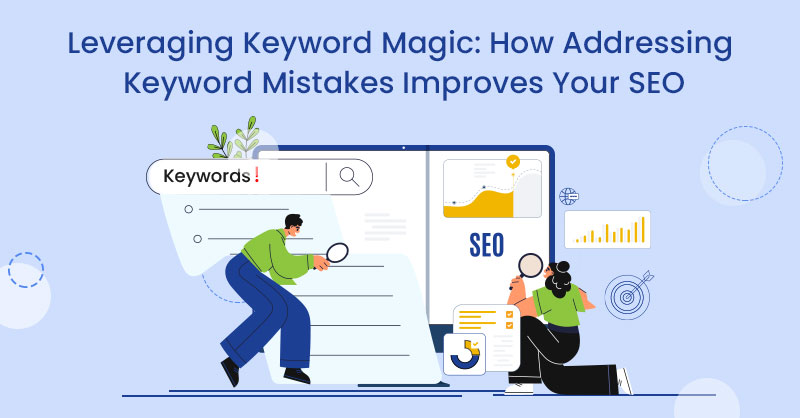As a copywriter (and the CMO of a content writing service) writing conversion-optimized content has been a big part of my life for longer than I'd like to admit.
Over the years I've picked up a few reliable, and repeatable steps that we now use every time we write a CTA for one of our clients. The steps below are tried and tested, they work for us, and they can work for you too - even if you're not a master wordsmith.
A call to action is what you use to tell your target audience what action they should take once they’re done reading your copy. It’s usually in the form of a button that will take them to a website where they can perform that action.
1. Start With a Strong Command Verb
With a 35-character limit on ads, you don’t have much space to get your point across. Writing a short and strong CTA is not just necessary – getting straight to the point is also more persuasive. Don’t beat around the bush. Tell your audience exactly what you want them to do by starting your CTA with the desired action. Verbs like “buy”, “subscribe”, and “download” tell the reader precisely what they need to do to access your product or service.
Using a CTA like “Our latest podcast is up” might not get a great clickthrough rate because potential customers might not be sure where they can find your podcast. A strong CTA like, “Subscribe to our podcast today!” is more direct and tells the reader what they need to do, which should improve your clickthrough rate.
2. Incite FOMO
FOMO – or fear of missing out – is a highly effective motivator and 69% of millennials report experiencing it. If people worry they might miss out on something and they won’t get another opportunity to get it again, they’re more likely to jump on it now. One of the best ways to use FOMO in your CTA is by mentioning a promotion or a sale that has a short time limit. You’ve probably seen a lot of this in your email inbox.
Messages like “Buy now before it’s gone!” or “Shop today! Sale ends tomorrow” provide a sense of urgency that makes your CTA hard to ignore. Using FOMO with time-sensitive situations like the Christmas season or Valentine's Day will help you get more clicks.
3. Give Your Audience a Clear USP Upfront
You need to set yourself apart from the competition with your unique selling point. The best USPs address a specific need that your customer has while telling them why you’re the best option to take care of that need. Give your audience a reason to care and make them believe that clicking your CTA will help them solve a problem.
Your USP is one of the most important tools in getting new leads, so combining it with your CTA is sure to increase your clickthrough rate. “Click here to get your free sample!” is a good example of this because it states the action you want your reader to take (click here), and then it tells them why they should take the action (a free sample).

4. Use Numbers in Your CTA
As consumers, we love seeing numbers. Pricing, promotion, incentives, discounts, and the like all help us decide whether it’s worth spending money on things we really want but don’t necessarily need. Including pricing information in your ad copy – including your CTA – can be very effective.
If a user can see your pricing information in your ad and clicks through to your site, you know they are still interested in what you’re offering, and you have an increased chance at getting that user to convert. On the other hand, if you leave out the pricing information in your CTA, someone might eagerly click through to your site, but then get scared away by your pricing without converting a sale.
You can experiment with your pricing information and any other relevant numerical information in your CTA. Something like “Shop now for printers under $50! Sale ends Friday!” not only shows the reader what they will spend on a printer, but it also hits them with FOMO as well. If you wanted to incentivize your audience with a discount, “Buy today for 10% of your next order!” could be a good CTA.
5. Provide Social Proof
How likely are you to buy something off Amazon that has no reviews? As consumers, we like to follow the crowd when it comes to spending our money. We want to know that other people have bought your product and that they enjoyed it first. Social proof is based on the same idea as “safety in numbers” – we want to do what we see other people doing.
The psychology field is full of experiments that demonstrate this human phenomenon, like this study from the 1950s that showed that people were willing to ignore reality and give wrong answers to fit in with the rest of the group.
You can use social proof in your CTA by telling your reader how many people are already enjoying your product or service. For example, something like “Join the 50,000 people who have lost weight with our program!” tells your reader that there are already 50,000 people benefiting from your service. That will increase their desire to join the pack.
6. Use Words That Provoke a Strong Emotional Response
You want your audience to feel something when they read your CTA. You want them to be full of enthusiasm for your product or service, and a good way to do that is to show them that you are enthusiastic about what you offer. Using an exclamation mark is a simple and effective way to convey your enthusiasm to the user.
Something like “book now and get your first visit 30% off!” comes off as excited thanks to the exclamation mark giving it a little extra pizazz that is likely to rub off on the customer. Use emotional trigger words like “fool-proof”, “take charge”, and “before it’s too late” to get a strong emotional response from the reader that will make them more likely to click on your CTA.
7. Use Cliffhangers Smartly
Storytelling is often used as an effective form of generating conversions with ad copy because it can use cliffhangers as a way to increase the clickthrough rate. As humans, we crave closure in our lives. When a story ends on a cliffhanger, we’re driven to find out what happens next by turning the page or watching the next episode – or clicking the CTA.
“Find out how to make $10,000 in one week” is an example of a CTA that uses a cliffhanger. The reader wants to know how to make that pile of cash, but to learn how, they need to click the CTA. Make sure you can back up your cliffhanger. Teasing your customers with a vague promise that you fail to deliver once they click on your CTA won’t do you any favors when it comes to generating conversions.

Remember to Split Test Different CTAs
Once you’ve created a few killer CTAs, don’t forget to split test them! By comparing different versions of your web pages with different CTAs, you’ll be able to identify which one has the best conversion rate for your visitors. You can take the information you learn and use it when crafting future CTAs.
Having an effective CTA is the key to driving conversions to your business and generating quality leads. Crafting the best call to action is a bit of an art and a bit of a science. There are no set-in-stone rules for creating the perfect CTA, but it doesn’t have to be a mystery. By following the above tips, and making sure to test them, you’ll be well on your way to creating a CTA that drives users to action and increases your clickthrough rate.






